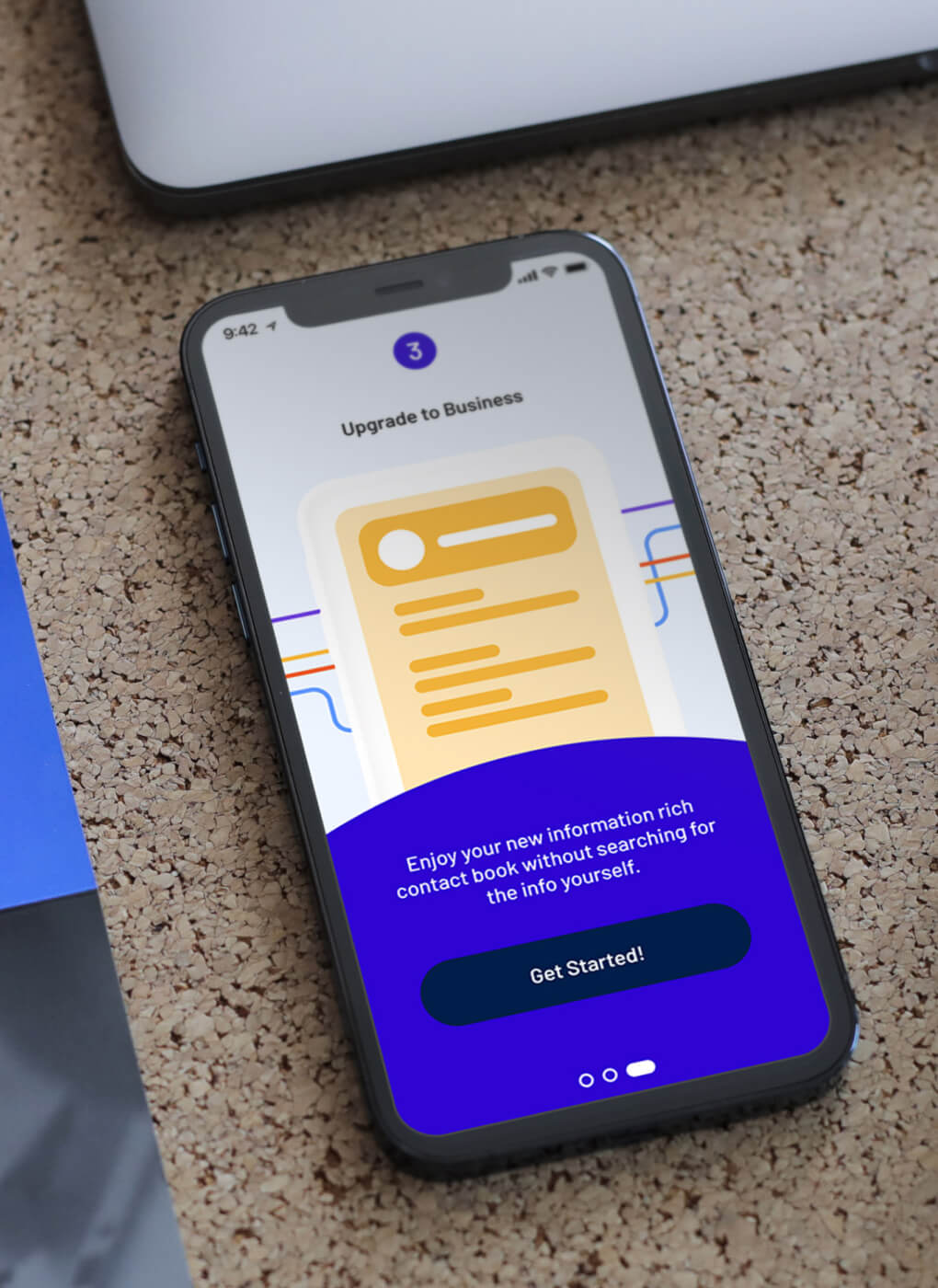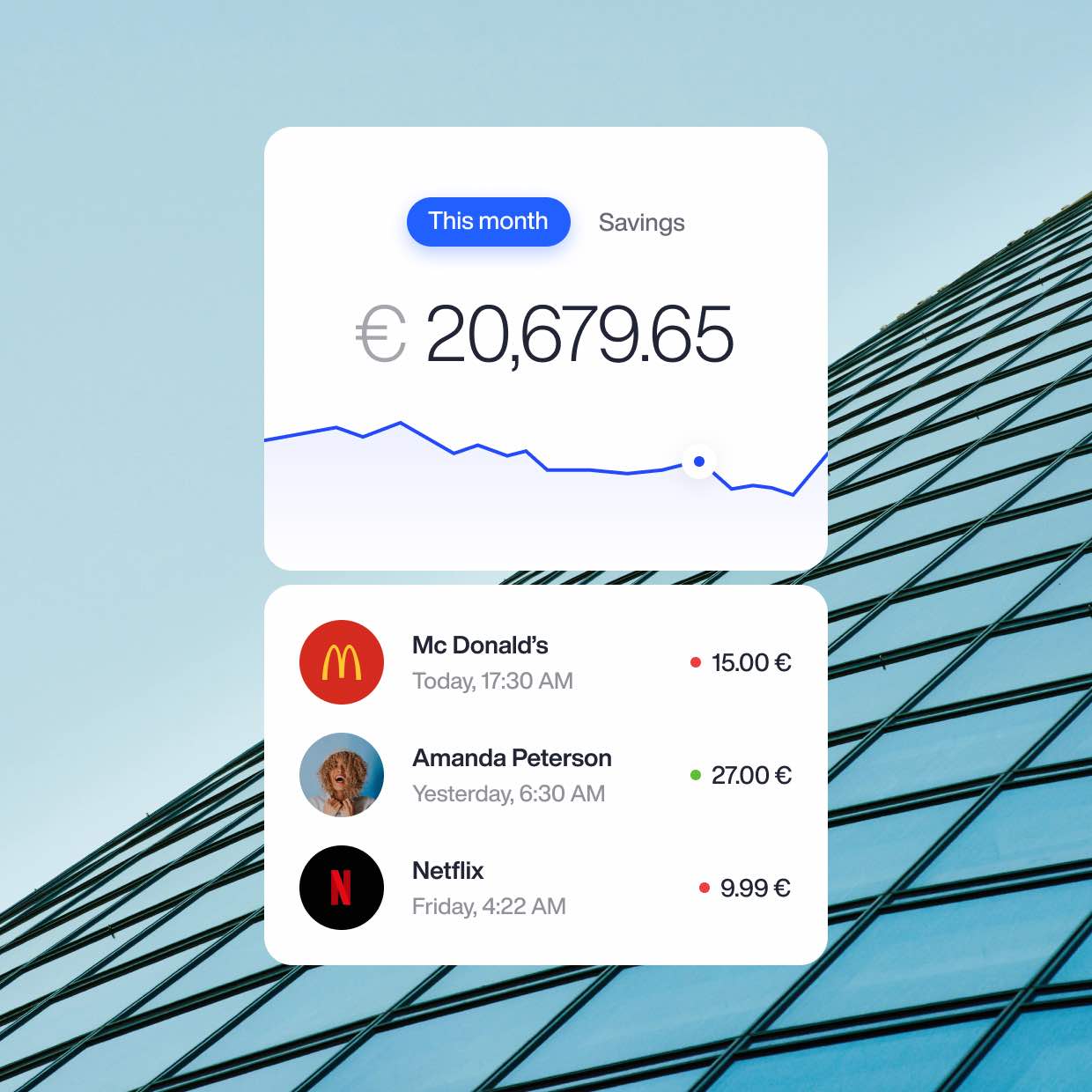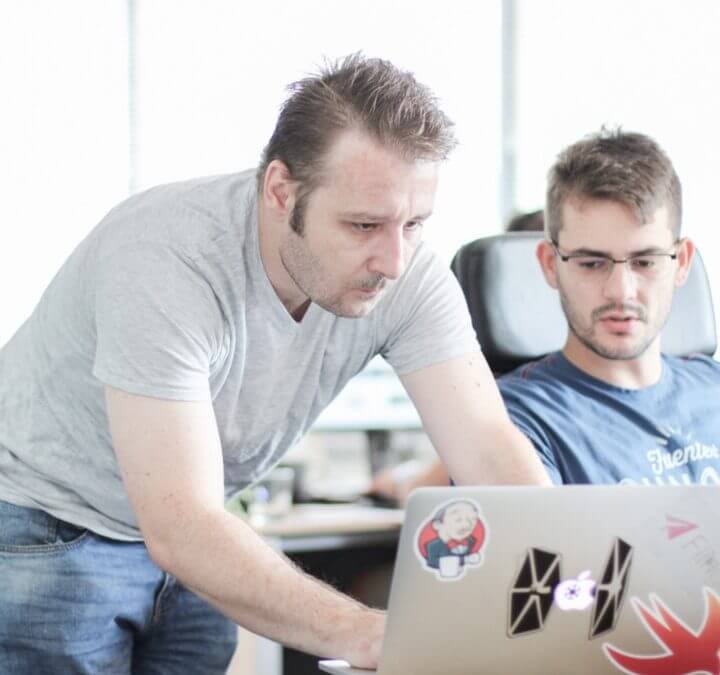If you’re looking for inspiration, and want to build an app to impress your users, here are the mobile app development trends to know.
Mobile app development
We are true experts in advanced mobile applications for iOS and Android platforms. We’re experienced in many industries including fintech and telecoms, building messaging apps, social platforms, mobile banking software and more.
What we do
Kotlin Multiplatform
We bring extensive expertise in native iOS and Android development to Kotlin Multiplatform, a powerful cross-platform solution. With Kotlin Multiplatform, we create seamless apps for multiple platforms using shared code while maintaining platform-specific performance and design.
Our specialist knowledge includes:
- In-depth understanding of Kotlin’s shared code architecture
- Expertise in building platform-specific modules alongside shared logic
- Proficiency in publishing libraries to repositories like Maven Central and custom artifact systems
- Advanced experience in integrating Kotlin Multiplatform with native APIs and third-party libraries
- Porting existing Android apps to iOS by reusing the existing Kotlin codebase, enabling cost-efficient cross-platform development while preserving performance and functionality
iOS native
We started building complex iOS apps when the first iPhone launched, and have been developing our talents with every new release. We understand the Apple ecosystem, and how to create high-performing software.
Our specialist knowledge includes:
- Extensive experience with Objective-C and Swift
- MVVM-C design pattern for project architecture
- RxSwift and Combine frameworks to carry out complex operations
Android native
We know Android inside-out, building advanced apps on this platform since 2012. We’ve amassed a wealth of experience in Android native development, getting the very best out of its ecosystem.
Our specialist knowledge includes:
- Extensive experience with Java and KotlinTypography
- MVVM design pattern for project architecture
- RxJava and Flow frameworks for complex operations
- Coroutines for writing asynchronous code
Flutter
We combine deep knowledge of native iOS and Android with cross-platform solution Flutter. Backed by Google, it means we can build apps for both operating systems using one codebase.
Our specialist knowledge includes:
- Detailed understanding of the declarative nature of Flutter
- Component-oriented architecture and software testing
- Experience in publishing Dart/Flutter libraries to the pub.dev repo
React Native
React Native is a powerful framework used for building cross-platform applications. Backed by Facebook, it’s another great option when creating apps for Android and iOS platforms using one codebase.
Our specialist knowledge includes:
- Writing bridges to connect native modules with JavaScript
- Redux for state management and Redux-Sagas for async side effects
- Declarative UI paradigm to manipulate native views directly


Why it works so well
Fully in-house teams
Everybody is together in the same office. It’s better for team spirit, problem-solving and instant knowledge sharing.
Continuous Integration & Deployment
Reactive programming
All our layers are glued together using the Reactive programming paradigm. That way we get reactive data flow inside the app so users experience real-time changes.
The best open source frameworks and libraries
We take advantage of the very best on the market, avoiding spending time developing standard elements and instead dedicating resources to valuable features.
We follow Apple HIG and Material guidelines
We understand how to develop reusable and high-performance UI components that are in line with Apple Human interface guidelines and Material guidelines.
App store regulations assistance
We handle the entire approval process from start to finish for both Google and Apple stores, guiding you on the best practices for optimal approval.
Our Work
We’ve loved working with many fantastic companies, and are really proud of what we’ve achieved together.
Explore our projects →
Here’s how we differ from other agencies
- Project managers with extensive tech knowledge.
- Our team focuses exclusively on your project. No context switching.
- We are product-minded. We look at all angles of your product, not just the coding part.
Extreme transparency
Regardless of the collaboration model, you’ll have complete communication access to every team member working on your project. You’ll also know exactly who’s doing what, when, why, and at what cost.
The secret to success — open communication
It’s more than just talking—it’s about building processes, guiding meetings, and fostering a big-picture culture.
Surround yourself with individuals who understand the ‘why’ behind their actions, driving your projects to meaningful success.
CEO at DECODE, Marko Strizic
Our collaboration models
Team-based
Access to a pool of seasoned experts ready to join your team.
Project-based
We build software products regardless of scale.
End-to-end projects
Proof of concept
Pilot projects
NEXT STEPS
Before we start our partnership, we have to make sure
we’re a right fit for you.
Over a relaxed call or two, we’d like to hear as much as possible about your project
(fully NDA’d of course).
We’ll talk about:
- Your expectations
- Services you need
- Your vision
There are a few steps in this phase:
- We’ll hand-pick a team based on your desired seniority level and other requirements.
- We’ll send you their CVs so you’ll know every engineer working for you.
- If necessary, we can set up interviews between you and every engineer.
Only when you’re 100% on board with our choice, we’ll go to the next phase.
If everything sounds good to you, we’re ready to get started.
This could be the start of a great partnership
Want to get in touch? Just fill in the short form below, or skip to the bottom to arrange a chat direct with our Head of Partnerships. Either way, we’ll be back in touch as soon as we can to arrange an informal call.
Don’t worry, any information you give us will only be stored for business purposes. Find out more in our Privacy Policy.

Arrange a chat with Ivor, our client strategy specialist.
Still unsure about something?
Don’t worry, whatever it is, we’ve got you covered in our FAQ.
Yes. In today’s environment, being agile is one of the most important things. Being agile doesn’t mean a lack of processes, but rather the opposite. Having good efficient processes and a strong working methodology helps us to be agile and at the same time organized and predictable.
Read more →
As our client, you’ll have direct contact with each member of your development team. We use tools such as Slack, Jira, Confluence, e-mail, and videoconferencing to keep our clients up to date.
We have weekly and daily standups where you can participate together with our entire team, or even work with them directly during in-person visits.
This smooth and transparent communication without a middleman increases efficiency, gives you full control over the project, and guarantees that the product will match your expectations.
Back in 2014 we made our first production real-time chat using WebSockets.
Since then, we have moved on to ejabberd XMPP which has excellent support, both on the server and client side, making development and creating features like ‘seen’, ‘delivered’ and similar functionalities quicker and simpler.
But we don’t just use that. When working on the Fling app we actually worked directly with ProcessOne, the awesome guys who created ejabberd. They took care of the server side, while we in DECODE handled the client side. Later we also worked with Erlang Solutions XMPP platform MongooseIM and some other proprietary technologies.
As far as third-party services are concerned (where there isn’t so much room for hard-core modification) we have tried out TokBox, Twilio and Bandwidth, and used Sinch (a tool from the same category which also offers audio and video communication).
We can provide you with any number of IT experts you need from our team of 70+ people.
The benefits of hiring a dedicated team for your project are numerous. The most obvious one is saving money and time. There’s no need for you to go through the long hassle of an expensive hiring process and maintenance of your employees. The time and money you saved can be redirected to other activities in your company.
Other benefits are
- You gain access to niche professionals
- You get quick development cycles and better collaboration
- You get a focused team
- The team is flexible
Read more about the benefits of a dedicated team in our blog post.
If the UX and UI design of the app are not seamless and pixel-perfect, all the hard-core engineering efforts will fall short. All your marketing work will be for nothing too if you have a high churn rate caused by bad user experience.
The most common reason for the failure of a software project is because vendors don’t keep their promises, over-promise or just vanish in the middle of the process.
Normally right when you need them most. Our main goal is to be your long-term partner, and to grow with you. You can rely on us, rain or shine.
We are committed to long-term gigs and we are investing ourselves in those partnerships. Therefore, we work on small number of projects simultaneously. We don’t jump from client to client and we don’t over-stretch by running too many projects at once.
We stick with our long-term clients so they always get our full attention, and don’t start something if we’re not sure that we can deliver all our promises.
If we decide to take your gig, you can be sure we are totally committed.
Get to know DECODE
Android team lead explains coding standards and guidelines
Working on enterprise-level projects is quite different from working on smaller projects. Codebase size, coding standards, documentation and many other factors all have to be taken more seriously, as enterprise-level projects have high standards.
48 min
In the spotlight
See all →- Mobile app development trends to know
- 8 biggest Android app development trends
Stay ahead of the game with these 8 biggest Android app development trends. Discover the latest advances and techniques that will shape the future of Android app development.
- 5 ways to use AI in app development
AI has taken the world by storm in recent years. Here, we bring you 5 ways you can use it in software development.
- iOS continuous deployment with Jenkins: a brief introduction
Yes, you’ve read it right. The title you expected was probably “Continuous integration with Jenkins”. But it isn’t.
- 7 must-have features of fintech apps for better user retention
Retention success comes down to the strategies and features that the best fintech apps employ. We list 7 fintech app features that help you raise the bar.
- Android vs. iOS app development: what’s the difference?
In this article, we’ll explain the key differences between iOS and Android app development.
- Our top tips for working with external development teams
In this article, we’ll share our top tips for working with external development teams.
- 9 characteristics of a great custom software solution
Check out this post for the top nine characteristics of a great custom software solution to help guide your development process.
- Porting android code to iOS: kotlin multiplatform
Reasons why you should consider Kotlin Multiplatform over 2objc and C++ in your next mobile app project.
Trusted by great companies

Our modus operandi
Work with us and you get a highly skilled team devoted to you and your product.











